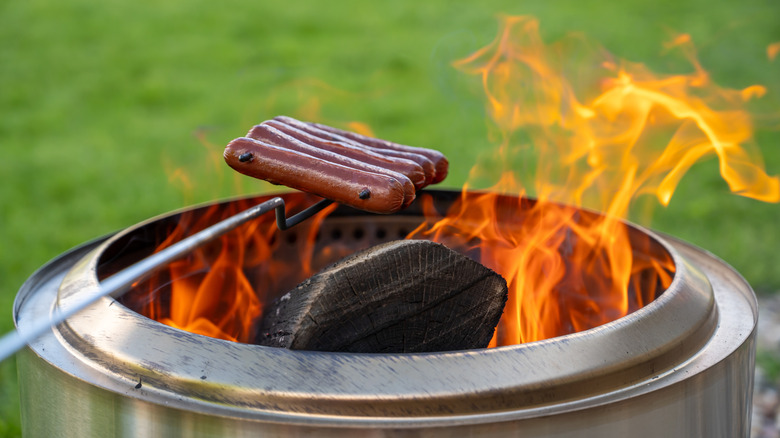What You Should Know About Smokeless Fire Pits Before Using One
People today value ambience and clean air. They imagine gathering around a fire on the patio without squinting through a cloud of smoke. Smokeless fire pits offer just that. They keep the flames alive but ditch the tear-inducing puff that typically accompanies them. This makes them, among other things, luxury items for comfort-conscious camping. But the technology behind this smokeless flame largely remains a mystery. Let's unravel that.
The smoke produced from starting and maintaining campfires is known as incomplete combustion. This is in reference to the fuel specs that aren't burned in the fire, resulting in a smoky haze. Smokeless fire has a way around this by burning twice, through what is known as complete combustion. It employs a two-stage combustion process that includes a primary burn and a secondary combustion, which we will explain in greater detail later. With that said, what may come as a shock is that smokeless fire pits are not completely smokeless. Here's why that is and what you should know before using one.
What's actually going on in a smokeless fire pit
Before installing a smokeless fire pit or bowl, there are certain things you should know. The first is the misconception that smokeless pits are 100% smoke-free. While the amount of smoke released won't be overwhelming, noticeable amount will still be produced even after the two-stage combustion process.
The first stage is the primary burn. Here, the fire sits on a ventilated base and air feeds it from beneath. The heat from this rises into the space between two metal walls and into the air. During secondary combustion, the hot air blasts above the fire, igniting the smoke before it drifts away. The best smokeless fire pits only just crack an 80% smoke reduction rate. Some areas may not permit smokeless bowls for specific functions at certain times of year due to fire bans, similarly to propane fire pits, so check your local regulations to avoid potential issues.
Another thing you should be aware of is the placement of the pit for safety purposes. Always place the pit on a heat-safe surface such as concrete, pavers, or gravel. Keep it at least a few feet from structures. You should also consider the fuel choice. Experts recommend dry, seasoned wood as wet or fresh-cut logs will create more smoke and kill the double-combustion system's efficiency. You might also notice that the fuel burns quickly. This is completely normal as smokeless fire pits burn hotter and cleaner, making them use fuel faster. It also depends on the model you get, as some burn hotter than others.

